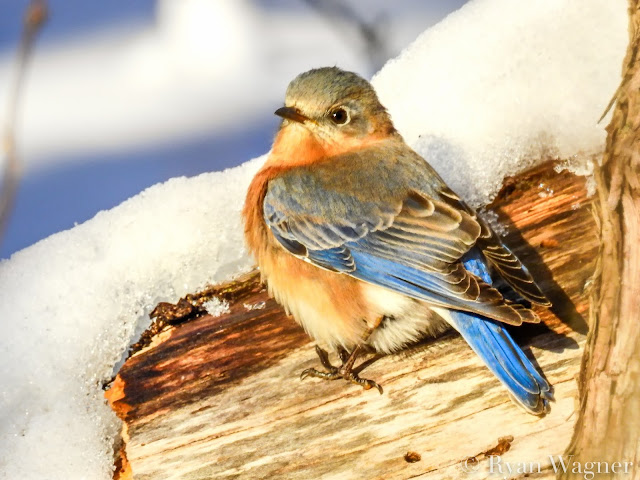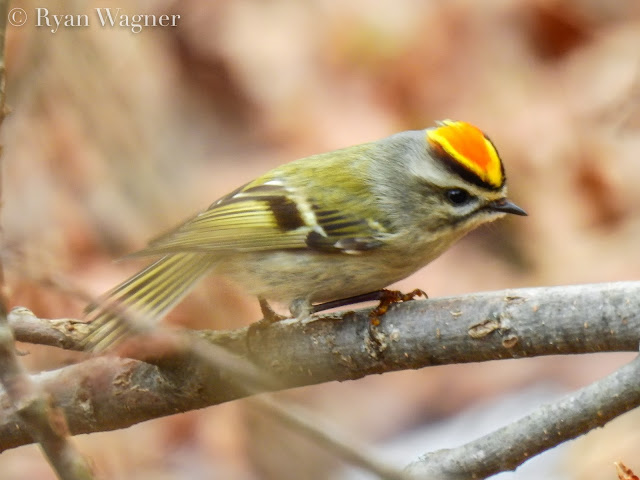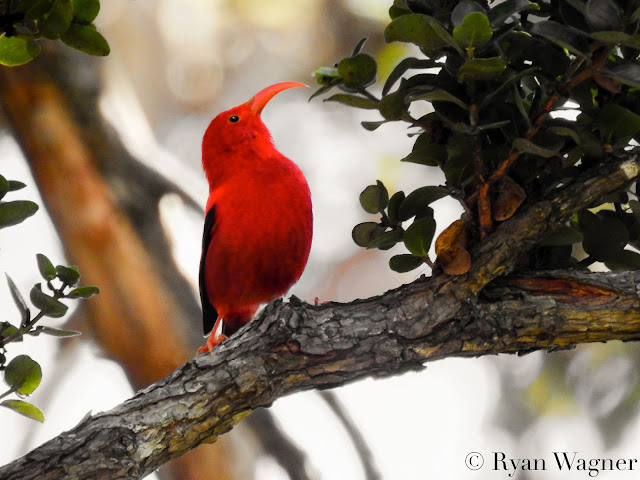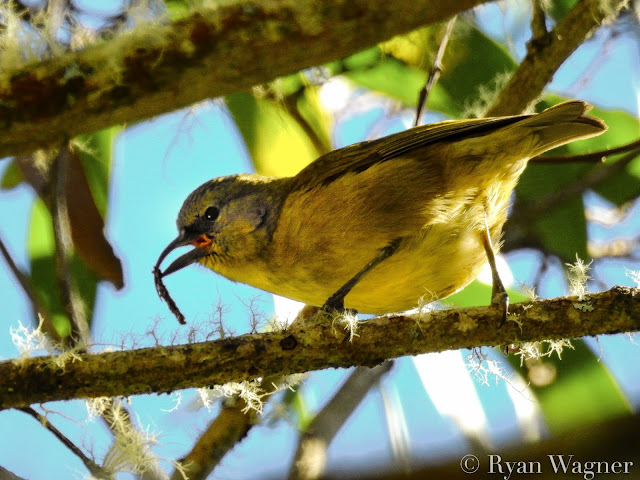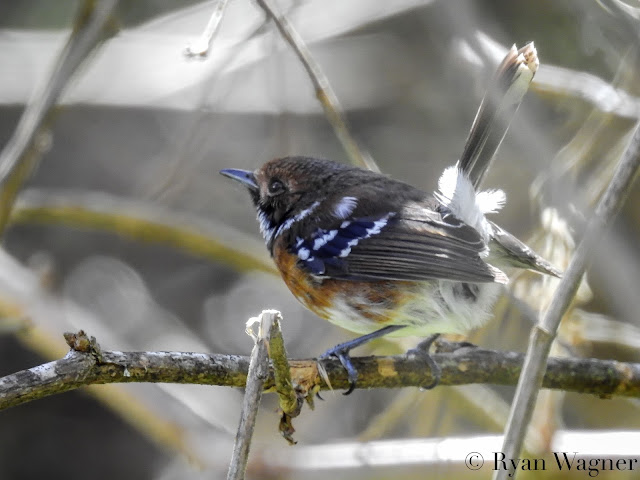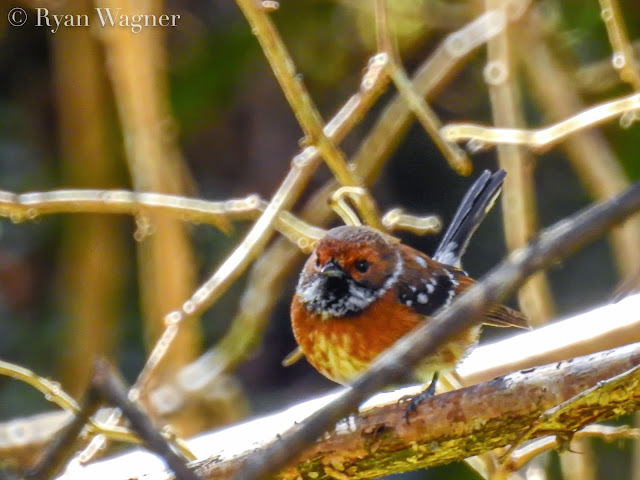On my final day in Hawaii I woke early, packed my camera equipment and hiking gear, and headed for mile marker 28 on Saddle Road. I was on my way to (hopefully) see some of Hawaii’s rarest and most endangered native bird life. Hawaii is often referred to as the “bird extinction capital of the world.” While it is true that Hawaii has lost over 65% of its native avifauna, I would soon learn that the real story is much more complex.
Had the HMS Beagle visited Hawaii on its voyage around the world, we might today read about Darwin’s honeycreepers in place of his finches. The extent of adaptive radiation of Hawaiian birds puts the Galapagos archipelago to shame. At least 56 species of unique honeycreepers evolved from a single ancestral finch-like bird that made it to the islands approximately 5.5 million years ago. Each bird adapted to fill a specific niche, evolving a vast diversity of bill shapes and sizes. There are nectar feeders with long, curved proboscises, insect hunters with small, sharp warbler bills, seed eaters with the thick bills of grosbeaks, and even a honeycreeper that feeds like a woodpecker.
No native reptiles, amphibians, or land mammals (except for a bat) colonized Hawaii. Without competition or threat from land dwelling predators, the birds flourished. Once humans made it to the islands, however, that would all change. The first Polynesians wiped out many of the ground dwelling and flightless birds. Upon European arrival, the extinction rate increased exponentially. Habitat loss coupled with invasive species and diseases served the final blow.
Today, only 18 species of honeycreeper survive. Gone too, are the giant ducks, the stilt owls, the flightless rails, and many of the other endemic Hawaiian bird species. The introduction of tropical mosquitos has wiped out native birds living in lower elevations. The mosquitos carry and transmit avian malaria from introduced birds. Pristine mountain forests above the mosquito line provide the final stronghold for Hawaii’s honeycreepers.
I booked a tour with biologist and bird photographer Jack Jeffery to visit one of these final strongholds: a rainforest known as the
Hakalau Forest National Wildlife Refuge. I parked at our meeting destination, the Pu'u Huluhulu Hunter Check Station, right at the base of Mauna Kea. Jack greeted me with a broad grin and a firm handshake and introduced me to the three other members of the tour group. A knowledgeable and charismatic individual, Jack proved to be as fascinating as the birds he studies. Always quick with a joke or bad pun, his voice swelled with appreciation and respect for the island’s wildlife.
Originally from the East Coast, Jack moved to Guam to earn his biology degree. On a holiday to Hawaii, he fell in love with the state and “never looked back.” For 18 years, he worked as Hakalau’s first Wildlife Biologist. He holds many awards in photography and conservation, including Conservationist of the Year from the Audubon Society and the Sierra Club. Today, he takes eager birders and photographers to search for Hawaii’s remaining endemic bird life. If you want to go birding in Hawaii, Jack is the guy to contact. You can visit his website at jackjeffreyphoto.com.
We all packed into Jack’s four wheel drive jeep and headed up the slopes of Mauna Kea. Jack provided us with a pamphlet of Hakalau birds that would serve as a handy field guide. He walked us through each of the species, describing their identifying characteristics, behaviors, and habitats.
“150 years ago, this would have all been forest,” Jack said, indicating the low shrubby hills that seemed to stretch on forever. Before Europeans introduced cattle, pigs, and sheep, the landscape would have been dominated by native trees like koa and ōhiʻa. Once the forests were stripped for pasture, the landscape would never be the same. Wild pigs and cattle still roam, but the land has been taken over by another european invasive: gorse (
Ulex europaeus). This low shrub, with its pretty yellow flowers, chokes out anything that tries to grow, preventing native forests from reclaiming the land. Seeds can remain viable for over 50 years, and the plants are resistant to fire, making gorse nearly impossible to remove.
The Hakalau Forest NWR is a step back in time. Created in 1985 specifically to conserve the birdlife residing there, Hakalau spans some 38,000 acres. It was spared most of the ravaging onslaught of livestock, and still retains much of its old growth forests. Pig and cattle-proof fences, together with intensive management, have helped to keep this forest as pristine as possible. At 6,500 feet, Hakalau provides a refuge from mosquitos and the diseases they carry. Here, bird populations aren’t just stable, they are likely increasing. Six of the seven extant honeycreeper species living on the big island call Hakalau home.
Nonnative game birds like California quail and ring-necked pheasant dashed across the dirt road as we approached the forest. I scanned the surrounding fields in hopes of spotting a pueo or Hawaiian short-eared owl. Skylarks and golden plovers were everywhere, flitting out of our way at the last second. As we entered the preserve I was blown away by the view. The peak of Mauna Kea rose above the landscape like a stone goddess. Recent storms had frosted her summit in snowy white; a dramatic touch to an already beautiful landscape.

There to greet us were half a dozen Nene (pronounced nay-nay) or Hawaiian geese (Branta sandvicensis). I hopped out of the jeep and immediately started photographing. Something about the scene felt so familiar. I was thousands of miles from home, and yet could be photographing Canada geese in my own backyard. The Nene is a fascinating story in itself. The state bird of Hawaii, these geese were nearly wiped out by the 1950s. Thanks to conservation efforts, they are making a comeback. Eggs and nestlings are still under threat from a host of invasive predators like the Indian mongoose, making their continued survival anything but certain.

Before hiking into the trees, the four of us gathered around Jack for a final run through the field pamphlet. He reiterated what to look and listen for. Most importantly, he explained that a pair of ʻakiapōlāʻau (ah-kee-ah-POH-LAH-OW), the rarest hawaiian honey creeper at the refuge, had recently raised a fledgling. The young are easier to find due to their unmistakable chipping call. “If we hear the call of the aki,” Jack deadpaned, “we’re running to it.”
Rainforest gives the wrong impression of what the Hakalau is like. Nothing about this refuge was dense or tangled; instead of thick vines and huge drooping leaves and musty flowers, this forest was composed of enormous gnarled ōhiʻa and lichen covered koa, cleanly spaced apart like trees in an arboretum. Their branches grew in low swooping arches, bringing the canopy down to just above our heads. Golden light shown through the layers of tree cover, allowing a thick understory of ferns and knee high grasses to grow. I would later learn that in Hawaiian, Hakalau means “many perches” referring to the sinuous network of the branches here.

The koa (Acacia koa) is the largest native Hawaiian tree, reaching over 150 feet in height. Jack explained that as saplings, these trees grow pinnately compound leaves not unlike the fronds of a fern. As the trees age, the leaves broaden to form whole distinctive sickle-shaped leaves. Many birds, including the ʻakiapōlāʻau (Hemignathus munroi) rely on this tree for their sole source of food.

Endemic to the 6 largest islands, the beloved ōhiʻa (Metrosideros polymorpha) is Hawaii’s most common native tree. Its specific epithet, polymorpha, refers to the many forms this tree can take. Neighboring ōhiʻa can look like entirely different species, exhibiting different growth patterns and a variety of leaf shapes. Extending from sea level all the way up to tree line on volcanic slopes (some 8,200 feet) ōhiʻa is one of the most resilient of Hawaiian trees. It paves the way for other plant species on new lava flows by laying down the first layer of sediment as it decays. Large trees, 80 feet tall and 6 feet in diameter, can be upwards of 500 years old, making them some of the oldest living angiosperms (flowering plants) on earth.
The ōhiʻa’s distinctive red blossom is an important food source for many nectar feeding insects and birds. Legend tells of the fire goddess Pele transforming a young warrior into the ōhiʻa tree and his lover into its lehua flower. If the lehua is ever plucked, it is said the sky will begin to rain from grief.

Immediately, we were awash in bird song. Melodic warbles, metallic caws, ascending whoops, and squeaky wheels filled the air. An ‘ōma‘ō (O-ma-O) or Hawaiian thrush (Myadestes obscurus) landed a short distance from us and began calling its R2-D2-like series of tweets and squeaks. We had stepped into another world, alive with sound and flashes of color as vibrant birds began to appear all around us.
The very first honey creeper we encountered was the ʻiʻiwi (ee-EE-vee) or scarlet honeycreeper (Vestiaria coccinea). Jack calls them, “the poster child for Hawaiian honeycreepers.” This was one of the main birds I had hoped to find, and we didn't just see one. By the end of the trip, we had seen or heard some 50 individuals! Hakalau is the only place on Hawaii where ʻiʻiwi are more plentiful than the `apapane (Apa-pan-EE)—the most common honeycreeper on the island.
Darting from one tree to the next, the ʻiʻiwi were more common than the chickadees at my local bird feeder, and nearly as tame. They were incredibly trusting, allowing me to creep within a few feet for photographs. With their brilliantly red-orange bodies and black wings and tail, they reminded me of scarlet tanagers, though a bit smaller. When one individual popped out from the thick tangles of brush and landed inches from my nose, I could barley breath. A comically large, down-curved bill protruded from the bird’s face. This marvelous adaptation has coevolved with a species of flowering mint that has become just as sickle-shaped. ʻIʻiwi are also one of the most important pollinators of the ōhiʻa tree.
Suddenly, Jack stopped, turned and pointed down the trail. “That’s the aki! Lets move.” The five of us half jogged, half ran in the direction the aki had called from. I can only imagine how ridiculous we looked to the forest birds watching from above.
“There it is,” Jack said, pointing to a small koa. It was the young aki, hammering away with its lower bill in the characteristic woodpecker feeding style. “It’s a bit of a miracle that the ʻakiapōlāʻau survives at all,” Jack said. There are only around 800 individuals left in existence. These birds are endemic to the big island, where they persist only above mosquito line in high elevation koa forests. They feed on long-horned beetle larvae that live only within the decayed wood of mature koa trees. Aki have one of the largest home ranges and the longest parental care of any passerine—laying a single egg once every two years.
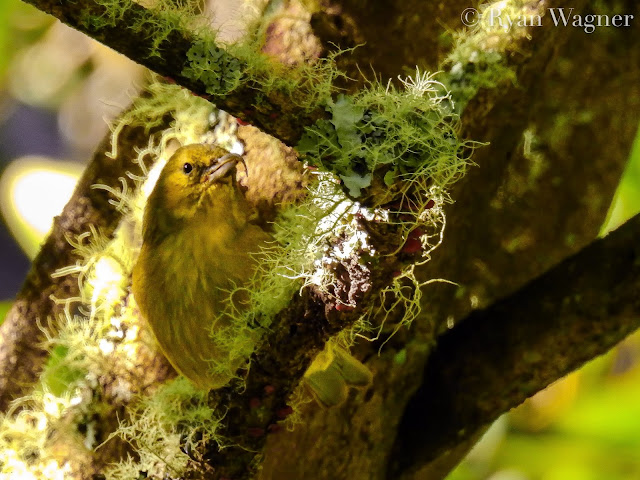
The little aki, however, didn't seem at all concerned with the peril of its species. It happily pecked away at the bark, using its long, curved upper mandible to reach inside the cavities it had just pecked. Its feeding style reminded me of the Madagascan eye-eye, a bizarre species of lemur that uses a thin middle finger to pry grubs from trees. The little, yellow bird allowed excellent views for over 5 minutes, before it decided to fly off.

I was stunned by the carefree nature of the birds here. Evolving without native land predators meant they had no natural instinct to fear us. Jack rattled off the scientific names of native and invasive plants left and right. Every tree, every clearing, nearly every branch and little patch of foliage had a story. His years of photographing and exploring this forest had brought him dozens of once in a lifetime encounters with Hawaii’s rarest birds. He even showed us the exact spot where over 20 years prior, the BBC had filmed a segment for David Attenborough’s Life of Birds.

As we hiked on, the bird diversity only grew richer. We spotted a few introduced species, like the Japanese white-eye, but most were natives. An `io (EE-O) or Hawaiian hawk (Buteo solitarius) wheeled overhead. These hawks are some of the few bird predators native to the island. They come in a light and dark morph; the individual overhead was a rich chocolate brown. Like many of Hawaii’s avifauna, it was once nearly extinct, but is now seen in larger numbers on the big island of Hawaii.
Jack pointed out a little, yellow bird with a dark mask creeping up a tree. “An amakihi (Ama-kee-hee),” he identified. The multipurpose bill of the amakihi (Hemignathus virens) allows it to feed on nectar, fruits, berries, and insects. They are a common honeycreeper, found even below the mosquito line.

“Here's another one,” Jack said, “see how its almost creeper like.” We all looked closer. “Wait,” Jack corrected, “that isn't the same bird.” It was in fact an endangered Hawaii creeper (Oreomystis mana), similar in appearance to the amakihi but with a white throat and a more “racoony” mask. These little honeycreepers feed like nuthatches, plodding methodically up trees to check under bark for insects.
Little flocks of `apapane (Himatione sanguinea) zipped through the forest in single file lines—several males courting a skittish female. These ʻiʻiwi lookalikes are brilliant red, but lack the huge orange bill. Instead, they feed on nectar with a thin black, curved beak. They can easily be told apart from ʻiʻiwi in flight by their white rumps.
All of a sudden, a little brown bird with an upturned tail danced into view. The little forest sprite was a native species of monarch flycatcher (Chasiempis sandwichensis) known as the Hawaii `elepaio (Ele-pie-O). It hopped about, uttering a series of ascending wheep-wheep calls as if inviting us to chase after it. The cute, brown and cinnamon bird entertained us with its playful nature for several minutes. It stayed in very close proximity to the trail, never perching in one spot for more than a few seconds.
The only honeycreeper species at the refuge we didn't lay eyes on was the endangered ʻakepa (Ah-kep-Ah) (Loxops coccineus). Jack pointed out its soft twittering call a few times, but we never got close enough to actually see the little bird. ʻAkepa are the smallest of Hawaii's honeycreepers and the only remaining species to nest in tree cavities. "At 9 grams, you could fit 3 in an envelope and mail them to your cousin for the price of a forever stamp," Jack joked. Male birds are a brilliant shade of orange while females are greenish gray. They have a unique crossed bill used to pry open leaf buds to feed on microlarvea.
After almost 9 hours of birding, we headed back down the mountain; I had a flight to catch in a few hours. Truth be told, I wasn't at all ready to leave. I easily could have spent an entire week doing nothing but exploring that little patch of Hakalau forest. Birding with Jack was one of the coolest things I have ever done. Writing this post in frigid, snowy Ohio (this morning it is 9 degrees), I can feel the ʻiʻiwis calling me back. Hiking through the forested mountainside was a surreal experience; I sometimes wonder whether it was just a dream. The remarkable birds that call Hakalau home still dance in my mind every time I close my eyes. I hope to one day soon return to Hawaii to visit these birds again. Finding the illusive, orange ʻakepa and the finch-billed palila (PAH-lee-lah) (Loxioides bailleui), restricted to the dwindling dry mamane forests on the slopes of Mauna Kea, are at the top of my list.
 |
| An old Hakalau Research Building |
My urgency to see the remaining honeycreepers might not be misplaced. Less than 10 years ago, the great, ancient ōhiʻa trees began dying all over the island. The culprit, a newly discovered human-transported fungus soon to be known as ROD, or rapid ōhiʻa death. The fungus blocks the tree’s vascular system, starving them of water and nutrients. Healthy trees that have grown for generations die within 3 weeks of showing symptoms. With over 60,000 acres already impacted, this fungus could wipe out over 90% of Hawaii’s forests within 10 years. Hakalau is closed to the public, except for guided tours, to prevent the spread of this deadly disease. Jack takes special precautions, sterilizing equipment and hiking boots with a solution of rubbing alcohol.

If ROD wasn't enough, the mosquitos that exterminated Hawaii's honeycreepers from low elevations are beginning to adapt to higher climate zones. There is some evidence that a few honeycreeper species are beginning to develop immunity, but their time is short. Climate change has already warmed the islands enough for mosquitos to expand their range. In coming years, the birds are likely to be pushed higher and higher up their mountain slopes. With no forests, and nowhere to go, the honeycreepers could be at the end of the line.
Hawaii hosts 33% of threatened or endangered birds listed under the endangered species act, and yet, receives only 5% of federal funding for conservation initiatives. With human intervention and education, we can save these remarkable birds. The American Birding Association has recently inducted Hawaii into the ABA birding checklist. The ʻiʻiwi was chosen as the Bird of the Year, representing all of Hawaii's diverse and beautiful bird life. This much needed public exposure will hopefully fuel more mainland birders to protect Hawaii's birds as their own. Take it from me, they are worth it.




